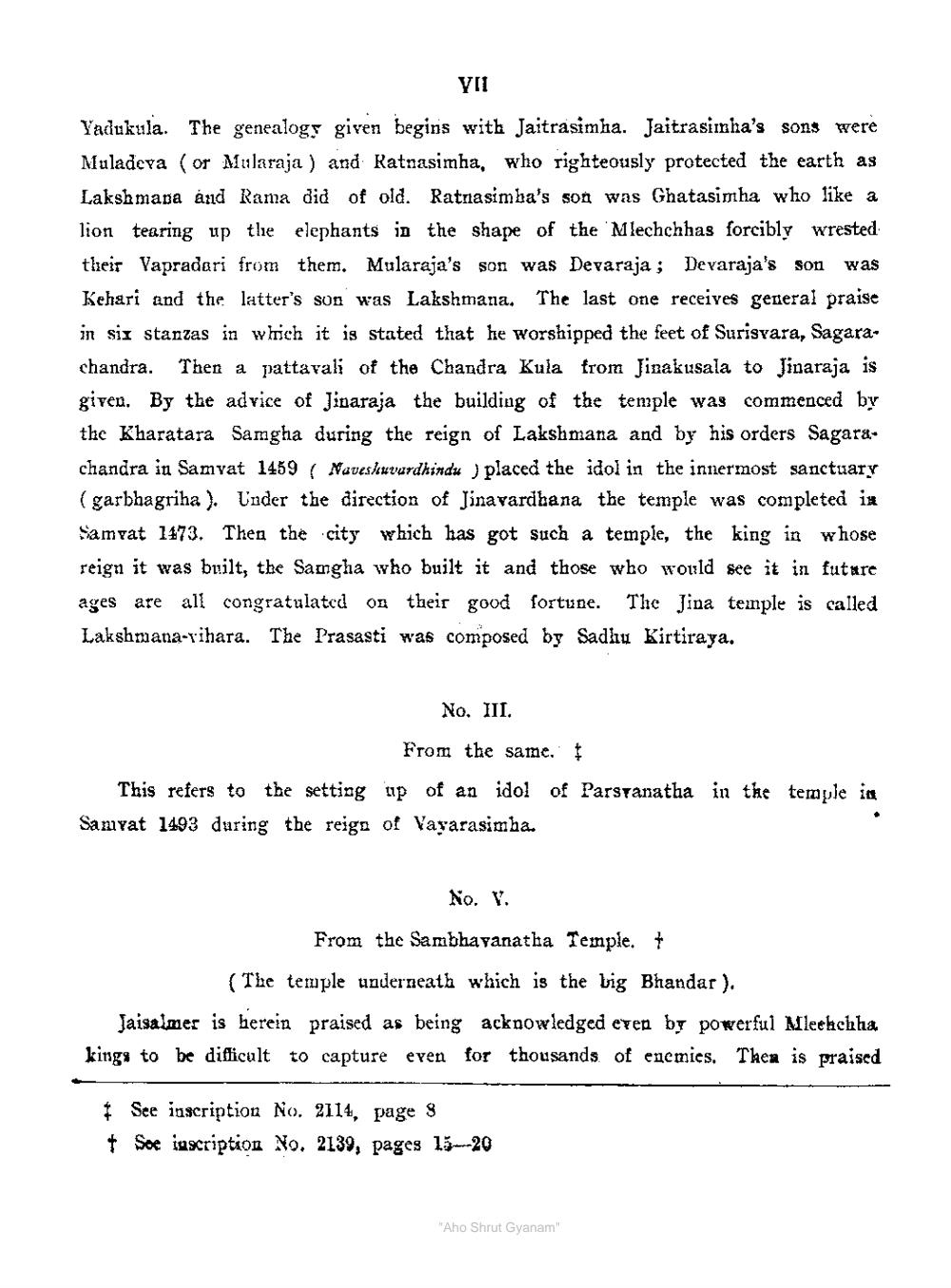________________
VII
Yadukula. The genealogy given begins with Jaitrasimha. Jaitrasimha's sons Muladeva (or Malaraja) and Ratnasimha, who righteously protected the earth as Lakshmana and Rama did of old. Ratnasimba's son was Ghatasimha who like a lion tearing up the elephants in the shape of the Mlechchhas forcibly wrested their Vapradari from them. Mularaja's son was Devaraja; Devaraja's son was Kehari and the latter's son was Lakshmana. The last one receives general praise in six stanzas in which it is stated that he worshipped the feet of Surisvara, Sagarachandra. Then a pattavali of the Chandra Kula from Jinakusala to Jinaraja is given. By the advice of Jinaraja the building of the temple was commenced by the Kharatara Samgha during the reign of Lakshmana and by his orders Sagarachandra in Samvat 1459 Naveskuvardhindu ) placed the idol in the innermost sanctuary (garbhagriha). Under the direction of Jinavardhana the temple was completed in Samvat 1473. Then the city which has got such a temple, the king in whose reign it was built, the Samgha who built it and those who would see it in future ages are all congratulated on their good fortune. The Jina temple is called. Lakshmana-vihara. The Prasasti was composed by Sadhu Kirtiraya.
No. III.
From the same.
This refers to the setting up of an idol of Parsvanatha in the temple in Samvat 1493 during the reign of Vayarasimha.
No. V.
From the Sambhavanatha Temple. +
(The temple underneath which is the big Bhandar).
Jaisalmer is herein praised as being acknowledged even by powerful Mlechchha kings to be difficult to capture even for thousands of enemies. Thea is praised
See inscription No. 2114, page 8 † See inscription No. 2139, pages 15-20
"Aho Shrut Gyanam"




